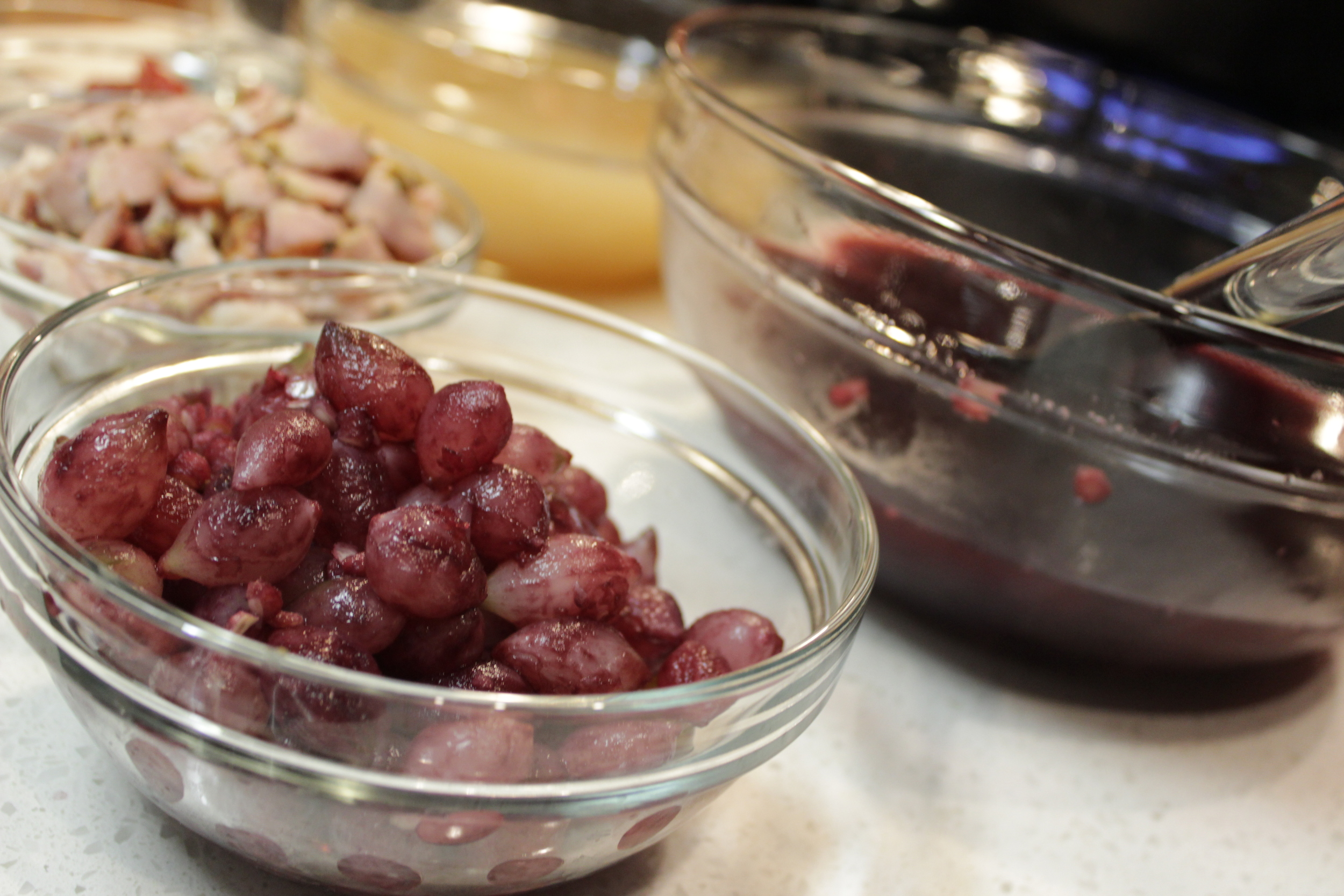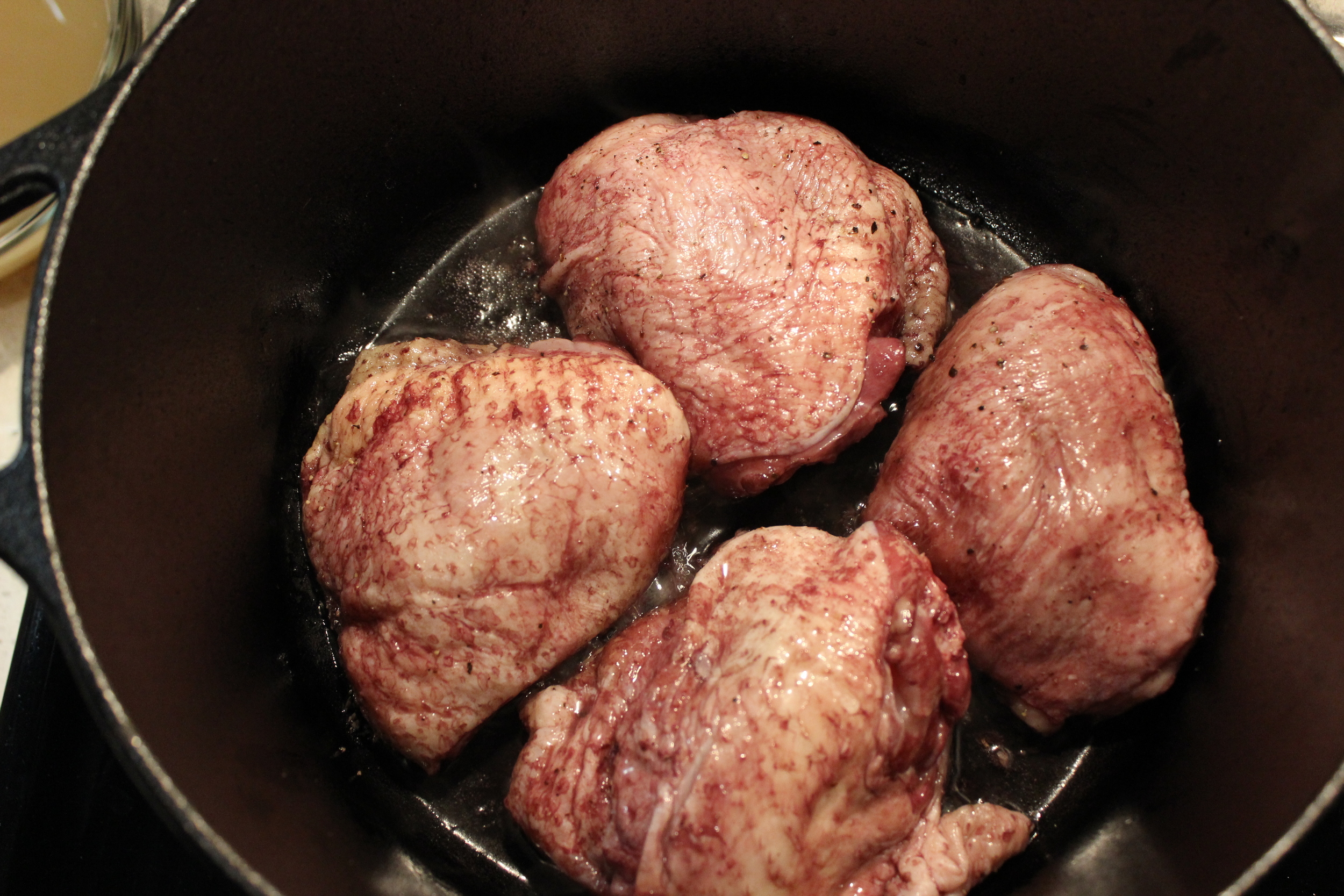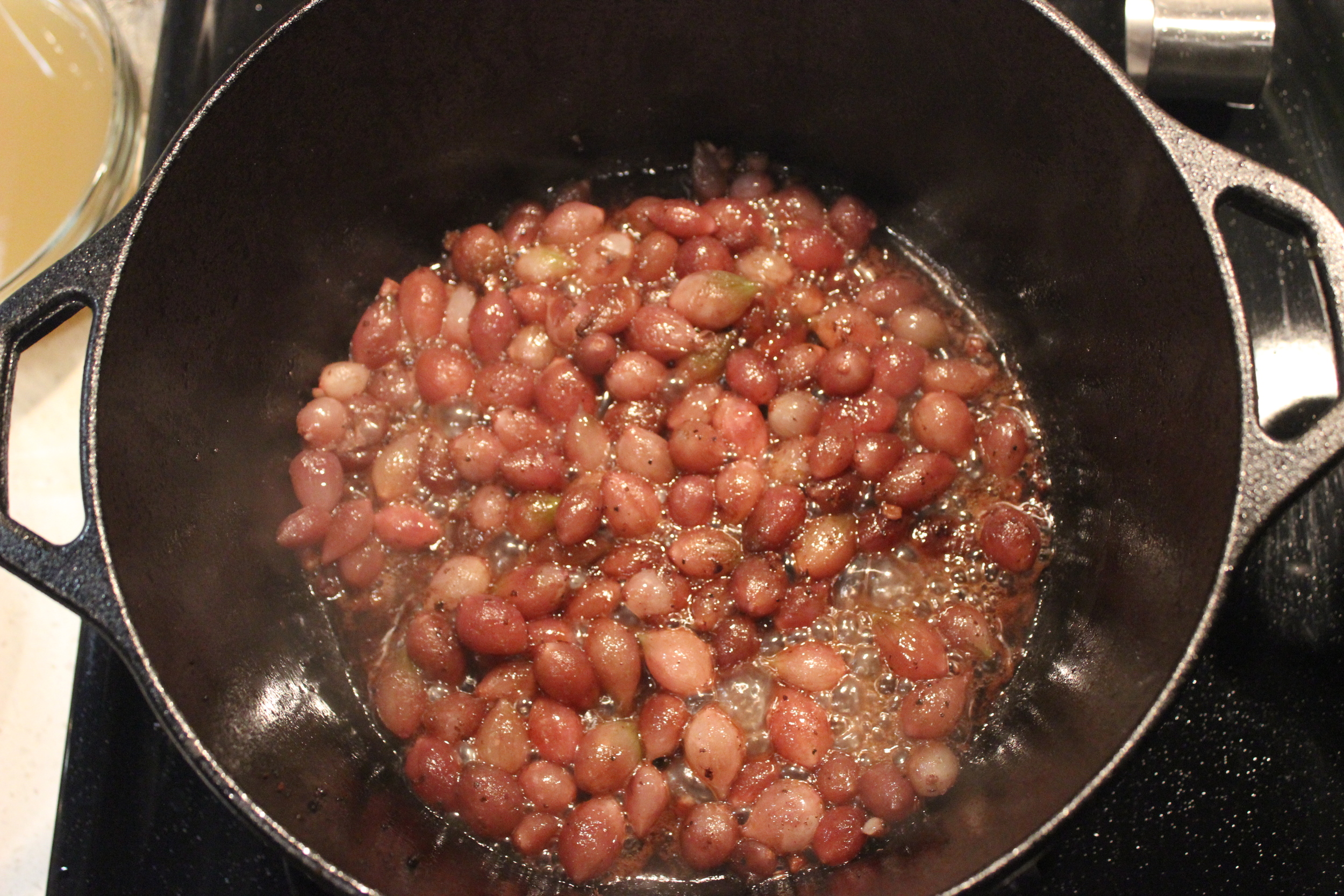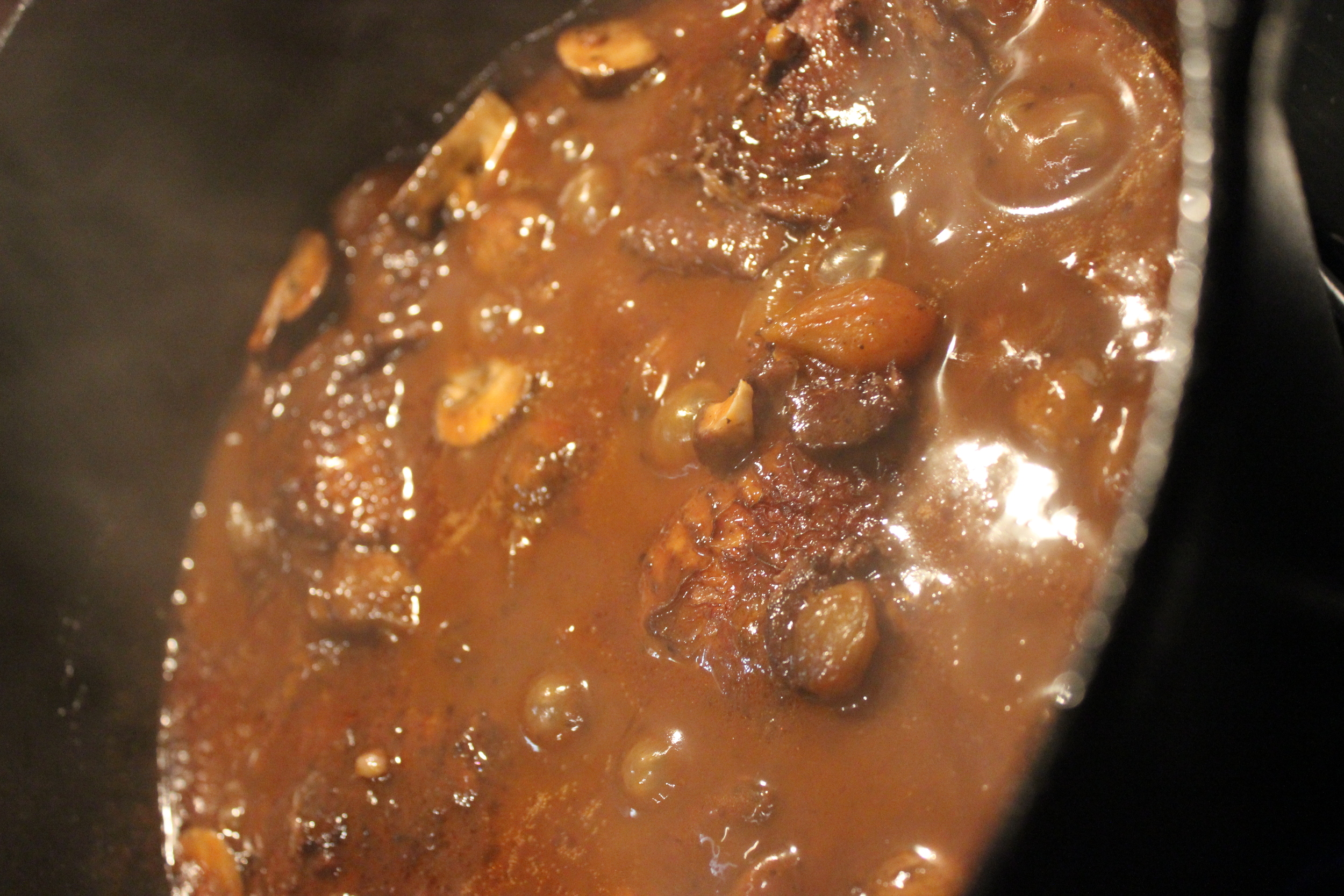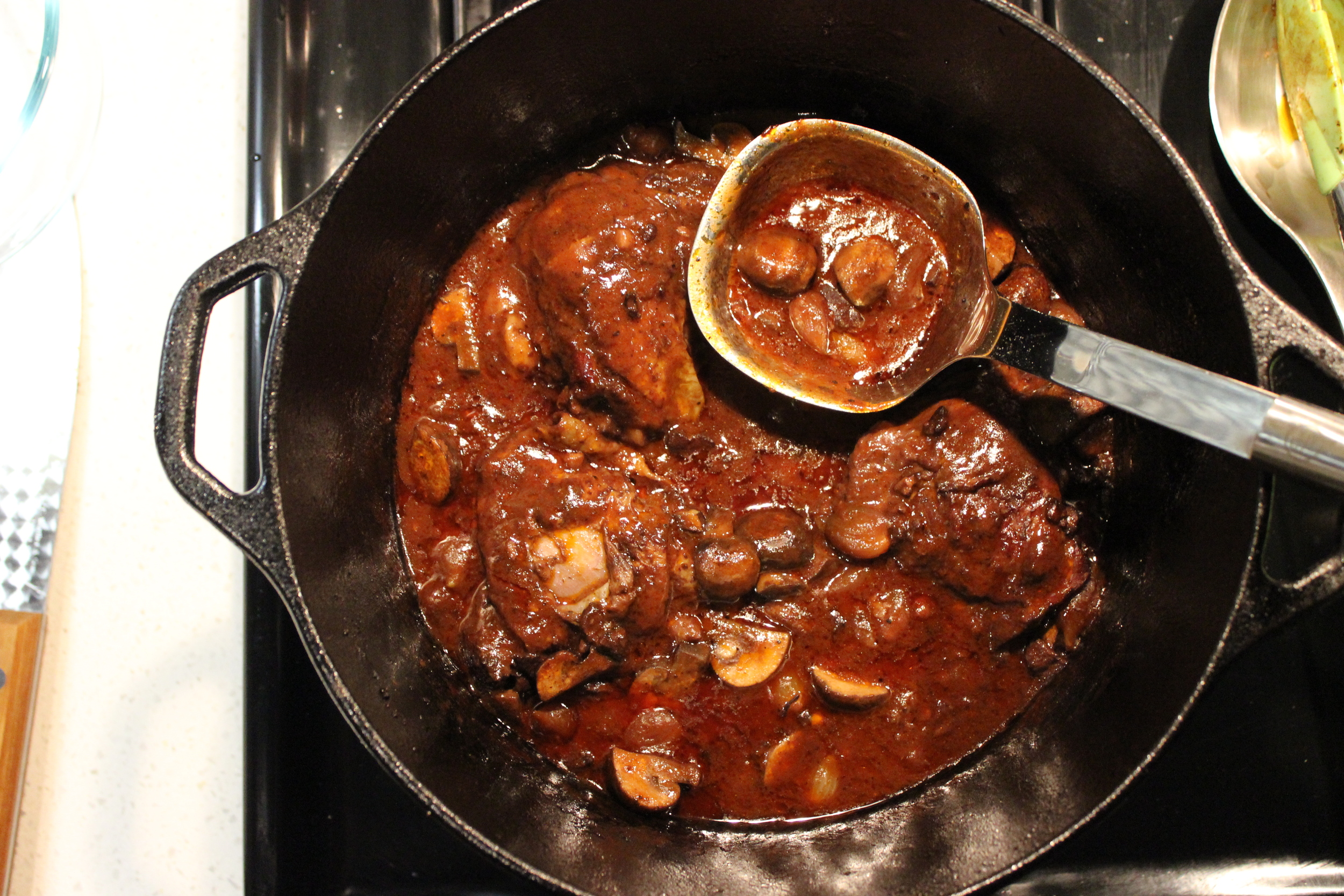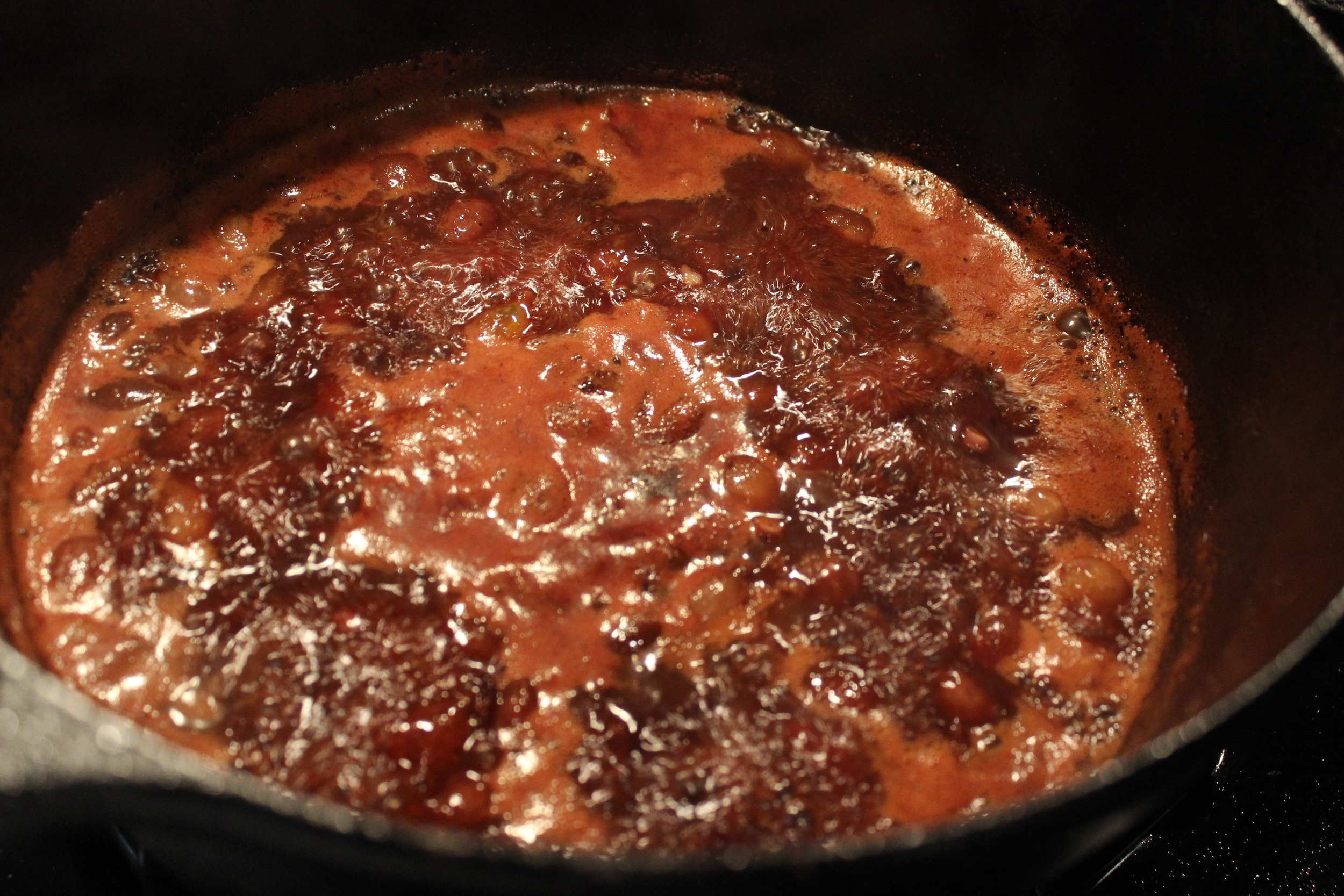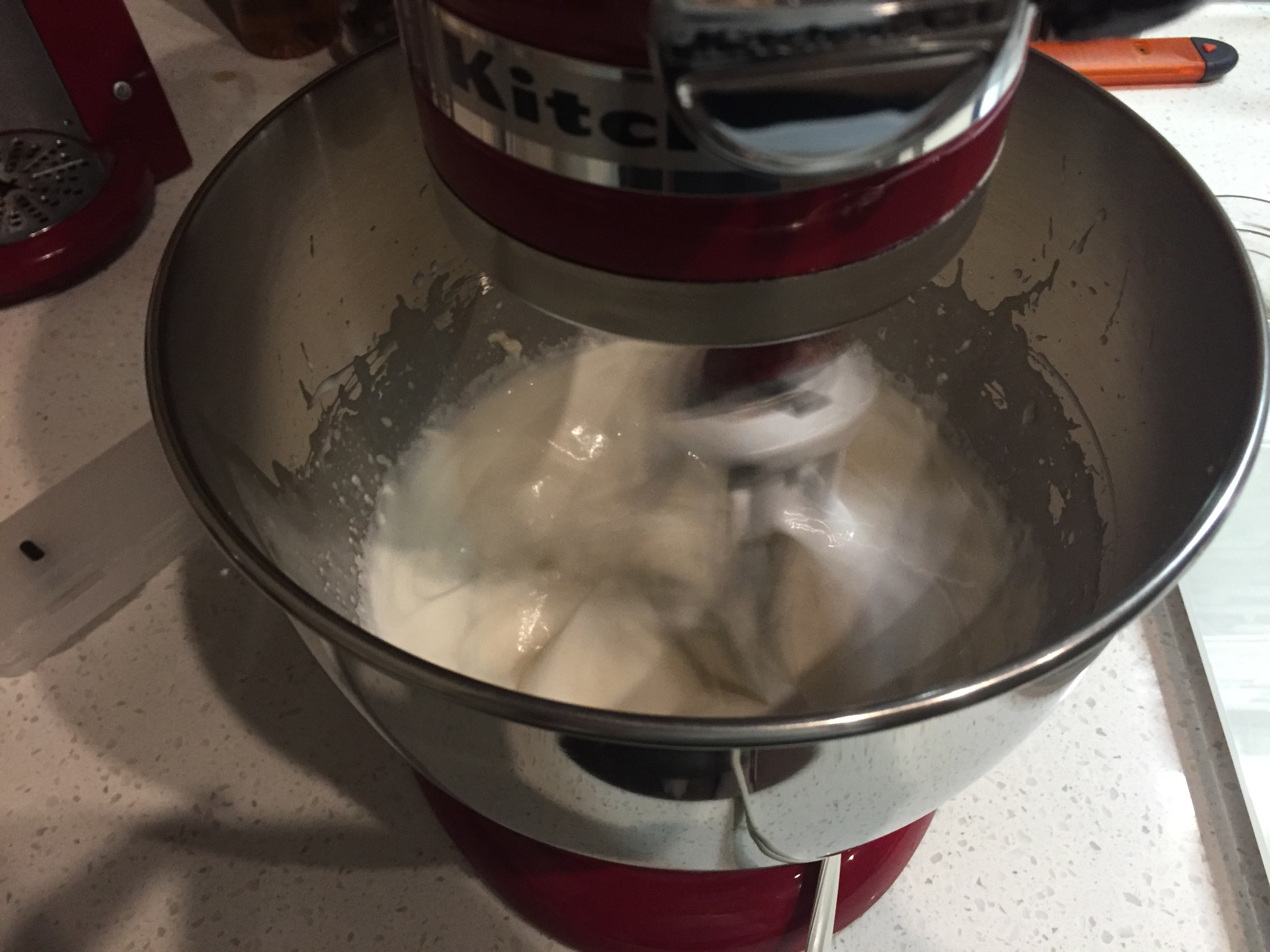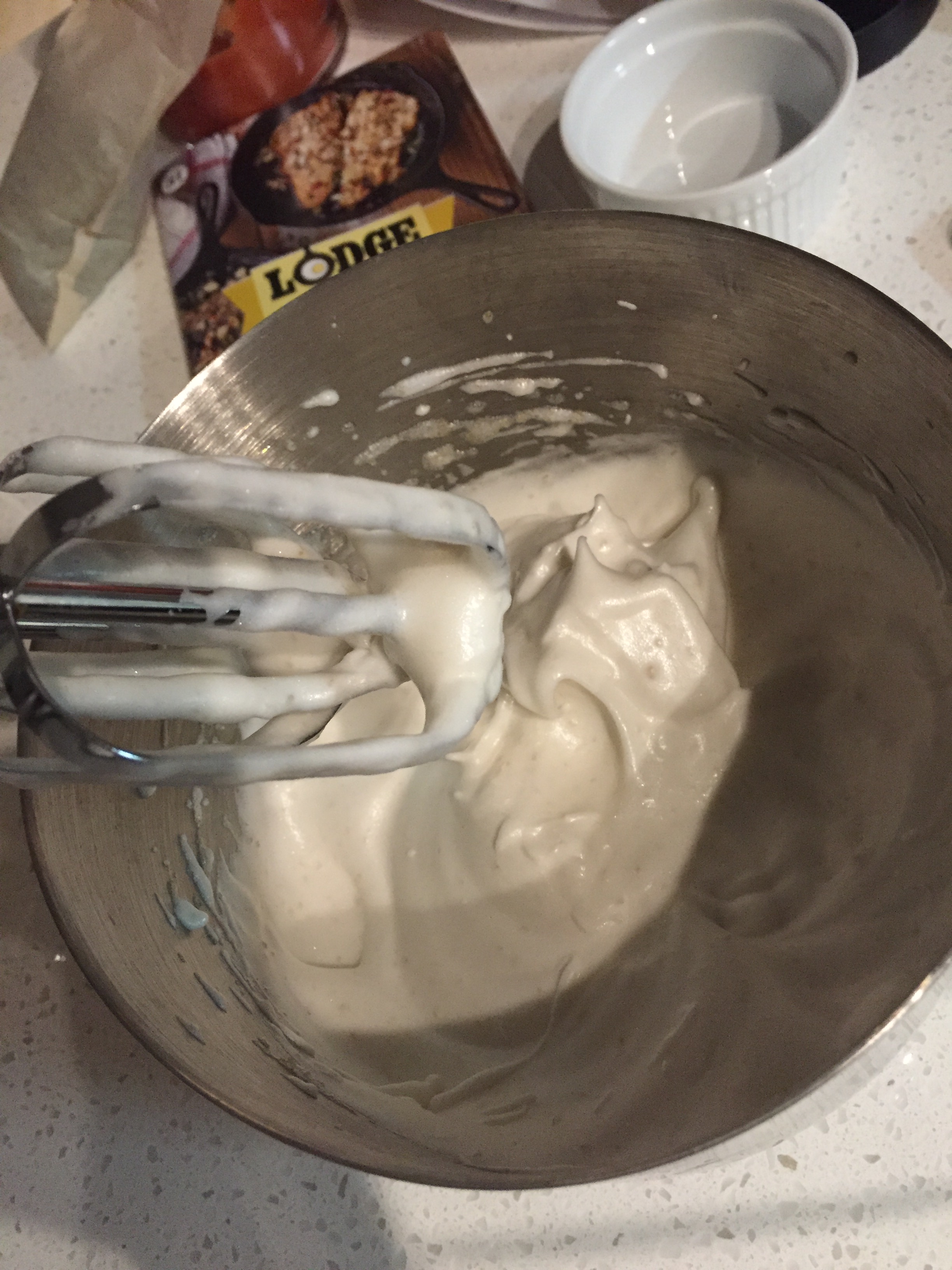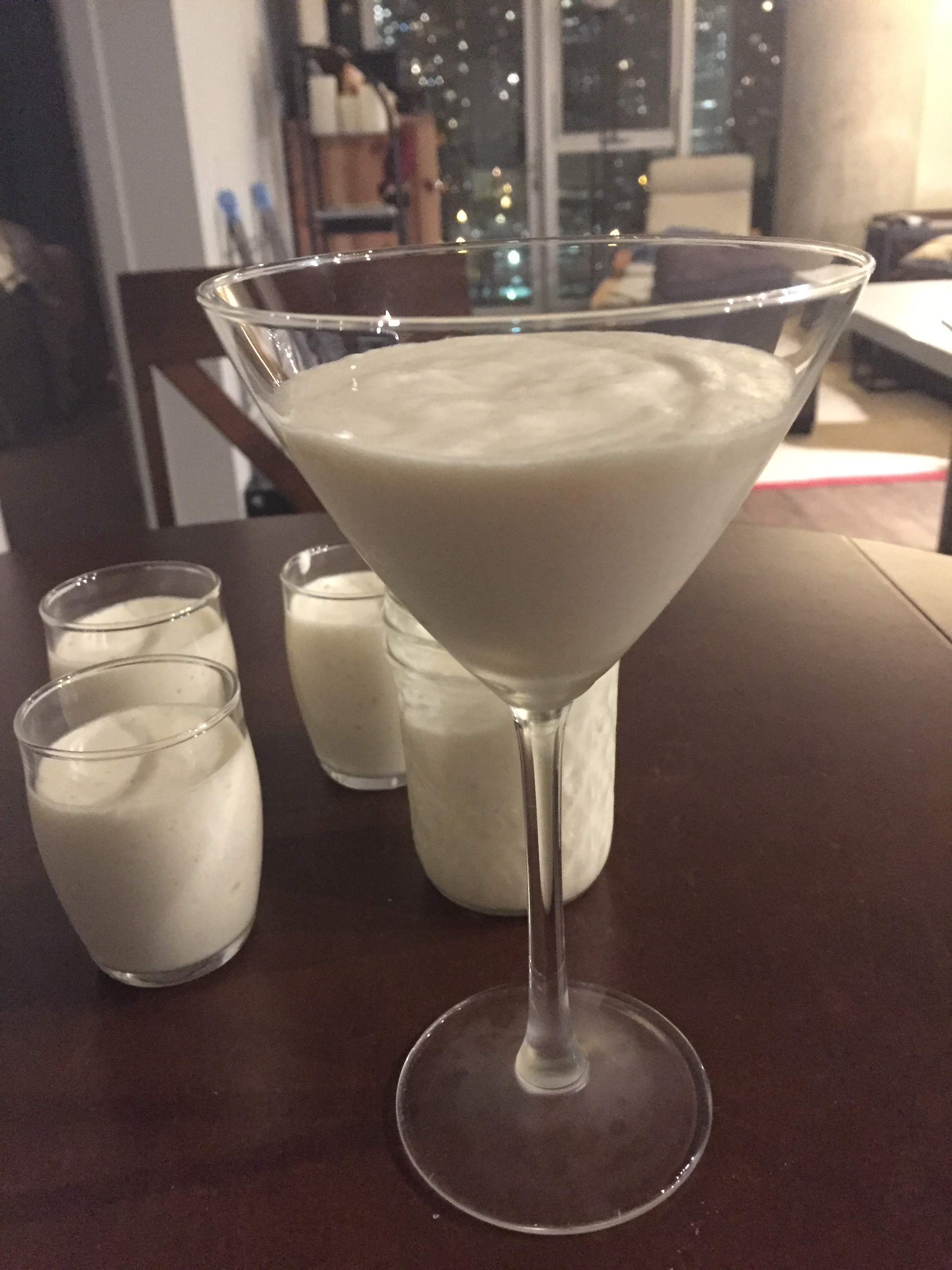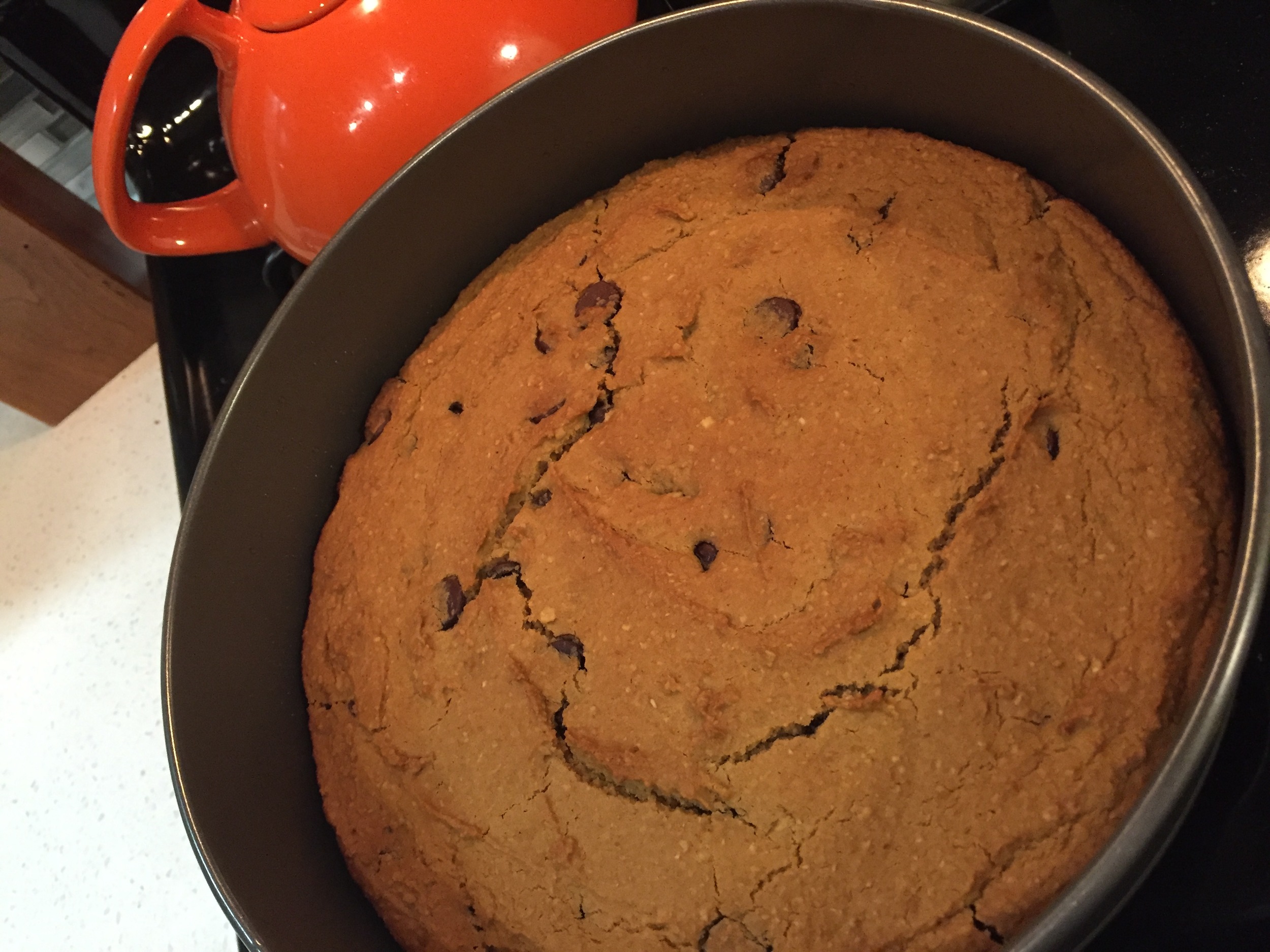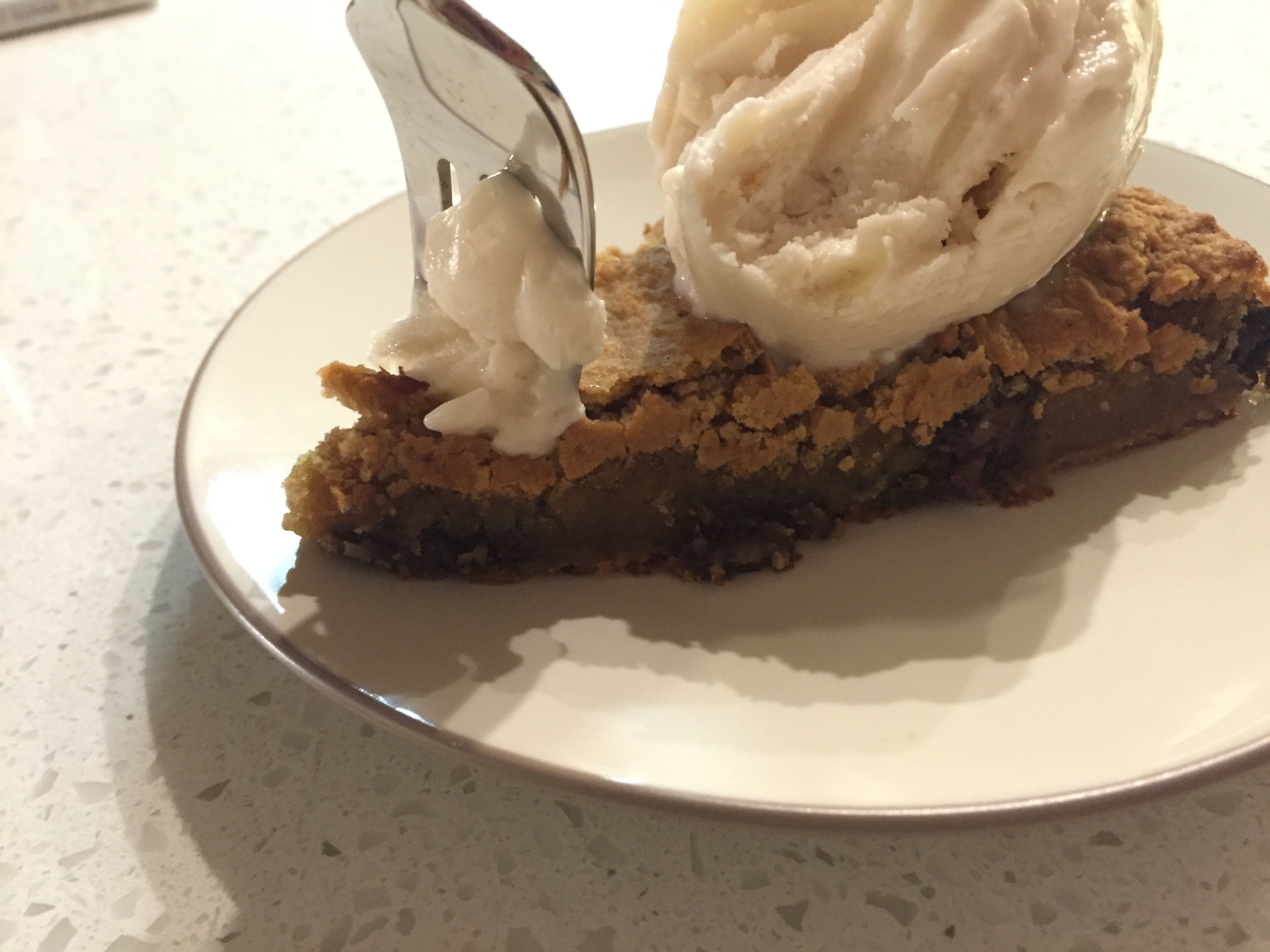En l'honneur de Paris: Crepes, Coq au Vin, & Mousse

This weekend the world was rocked by the tragic news of terrorist attacks in Paris. The world immediately flooded France with support, thoughts, and prayers. In memory of Paris, I decided to cook all French food this weekend.
The Lessons:
Chapter 6: Slow Heating Makes Meat Tender
In this Chapter we learned about Dry Aging. A term I've often heard, and I know its a good thing, but never knew what exactly it meant. Dry Aging meat means that meat is kept in a humid refrigerator for 30+ days which allows the enzymes in the meat to break down the muscle fibers which makes the meat more tender.
Because we don't have the proper conditions (or time) to do this in our personal homes, we can somewhat replicate it to a certain extent by wrapping steaks in cheesecloth (note to self that I need to buy cheesecloths) and store them in the back of the fridge for 4 days.
Chapter 7: Cook Tough Cuts Beyond Well Done
Lean cuts of meat - objective is to prevent overcooking because the meat will get tough if the internal temp is too high.
Cuts of meat high in collagen (need to find a list of what all those cuts are) are the opposite. The longer higher temperatures we cook them to the more of their collagen (tough) transforms into gelatin (moist).
Chapter 8: Tough Cuts like a Covered Pot
Braising. Another term that I've heard but never really knew what it meant. There are three types of braising: pot roasting (large cuts of meats in liquid), stewing (small pieces of meat in liquid), and braising (everything else). This is similar to dry roasting or barbecuing meat, but not in dry air. Braising includes a covered pot, and while it can be done on the stove top, it is better to do it in the oven for more even heating. The steam provides a second source of heating as well.
The Food:
Crepes
Sunday morning I made crepes from this recipe from Saveur. I substituted the water for milk and added a half a teaspoon of vanilla extract for a little flavor boost. Not only were they easy and delicious and French, but I also mastered "the flip"! Tah-dah! The secret is to go big or go home. My first flip attempt was a little tentative, which was no bueno.
[embed]https://youtu.be/9JrNBkIZTao[/embed]
Coq Au Vin
I googled "most popular french dish" and came across Coq au Vin, which matches this week's Cook's Illustrated lesson on braising. Parfait! (That's "perfect!" in French...according to Google Translate). A little research later I found that Coq au Vin means "Cock with Wine," but in modern English, it really means "Rooster with Wine" (get your mind out of the gutter! its not that kind of blog!). According to Cook's Illustrated, Braising is best to tenderize tough meats. Which makes sense because rooster was a very tough meat back when the dish originated. Today, most recipes call for dark meat chicken which doesn't necessarily need the braising anymore, but we play along.
There are a lot of different recipes for Coq au Vin online and they vary from source to source:
- Regardless of Recipe: Chicken, Red Wine, Onion, Mushroom, and Bacon.
- Differences by Recipe: Long (24hr+) marinade vs no marinade, oven vs stovetop, some include celery and carrots.
I took pieces from a lot of recipes, marinading for 4 hours, utilizing the oven for about an hour, and excluding celery and carrots (I'm not big on either).
So first, this is time intensive. Second is that because of the serious deviations in recipes, in people's reviews and adjustments to those recipes, I can tell if I am going to perfect this, it will take some iterations.
Overall though, this turned out delicious and although it takes a bit of time and many steps, it was actually fairly easy I thought. I did use 2 tbsp of slurry to thicken it up at the end.
(White) Chocolate Mousse
Instead of the classic chocolate mousse, I decided to switch it up and make a recipe I found on Saveur for Vanilla Cream Cheese Mousse. It was delicious! But the consistency turned out more like a whipped fluffly pudding than a light mousse. For my first time making a mousse, I'd give myself an A for effort. I think next time I need to create stiffer peaks in my egg whites.
France Has Cookies, right?
I got a food processor this weekend!!!!! True milestone in a home cook's journey. So I immediately thought of my favorite recipe that calls for a food processor. Chocolate Covered Katie's Healthy Deep Dish Cookie. And sure enough, doing this recipe in a food processor made this recipe way smoother than in the past when I used a blender.
The one thing I'd like to call out is that while this is healthier than a regular cookie, it is not low calorie. But with no flour or butter, and replacing them with chickpeas, it is technically quite a bit healthier than a real cookie. And its SO delicious!! And I had fun with taking a video of my first food processor recipe :-) :
[embed]https://www.youtube.com/watch?v=PS5DyM--pqM[/embed]


